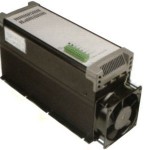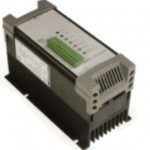Powering Inductive and transformer loads with an SCR
SCR have nearly eliminated all other types of controller for today’s furnaces and other industrial heating equipment. Depending on your elements you have a choice of Phase Angle or Zero Crossing, except when you are using an inductive device like a transformer or a motor. Powering motors, transformers and coils with an SCR requires a special SCR specifically designed to deal with the intricacies of inductive devices.
What is Inductance?
When discussing electrical power, inductance is what occurs to a conductor when there is a change in current flow. This change “induces” a voltage in the conductor and in any nearby conductors. This is how a transformer, coil or even an AC motor operate. Old car ignitions use this as a way to create the high voltage needed for spark plugs by opening and closing the points (a switch) to the coil.
To understand why this gets so ugly we need to look at a formula real quick, I promise to keep this simple. Inductors have the property of V = L di/dt which means that V = the voltage in volts and i the current in amperes. The voltage across an inductor is equal to the product of its inductance and the time rate of change of the current through it.
Inductive Kick-back
So we have now added time into our equation and this is what causes the problems. If you open a switch that is providing current to an inductor, it is physically impossible to turn off the current suddenly and have it actually stop, since our formula states we would have an infinite voltage across the inductor’s terminals.
In the real world what occurs is that the voltage across the inductor suddenly rises and keeps rising until current is forced to flow. This is when excitement happens. The voltage across the inductor can reach up to ten times its normal state, a thousand volts is not uncommon in this situation. This is when fuses, electronics, switches and relays start to give up the ship and begin to fail. This is also why semiconductors need to be rated so much higher than their typical operating voltages.
Quantum SCR Inductive Load SCR
We have a line of SCR specifically to deal with all these problems, they carry the TL code. If you are using any sort of transformer in your power you need to use a special SCR. Using the incorrect SCR will result in blown fuses and possible blown semiconductors.





